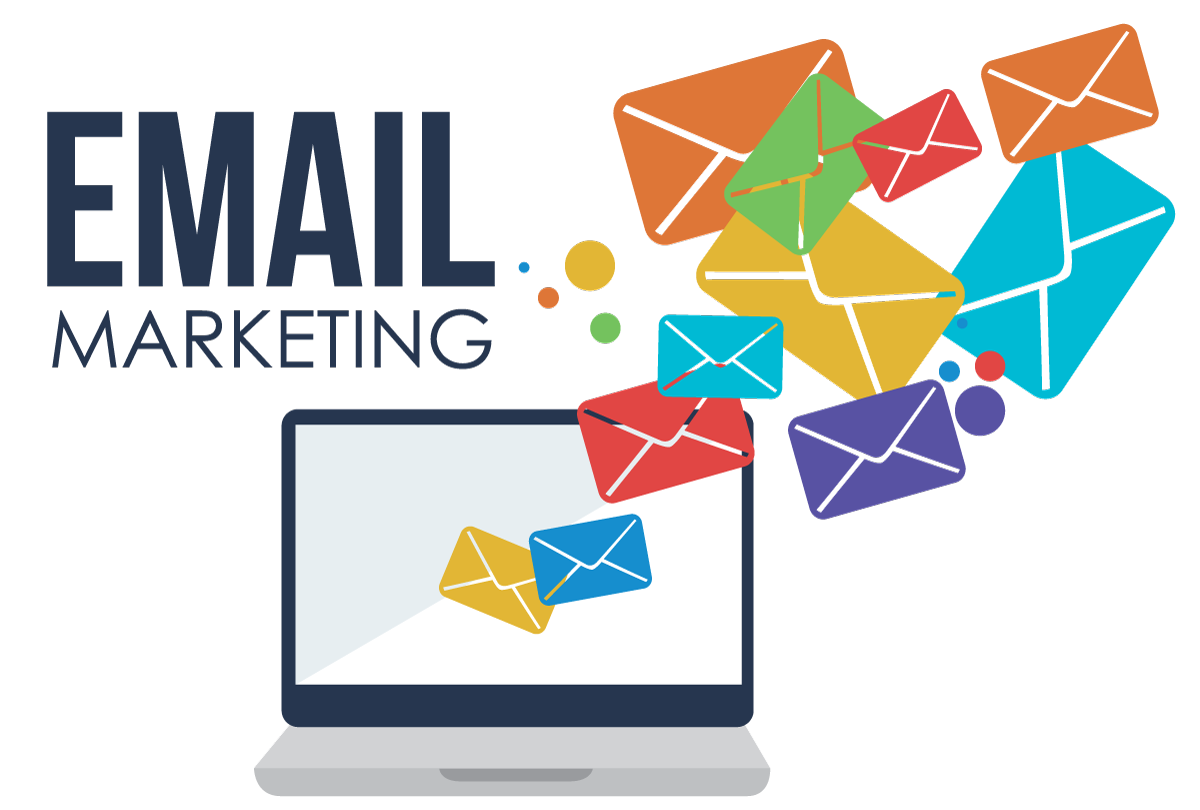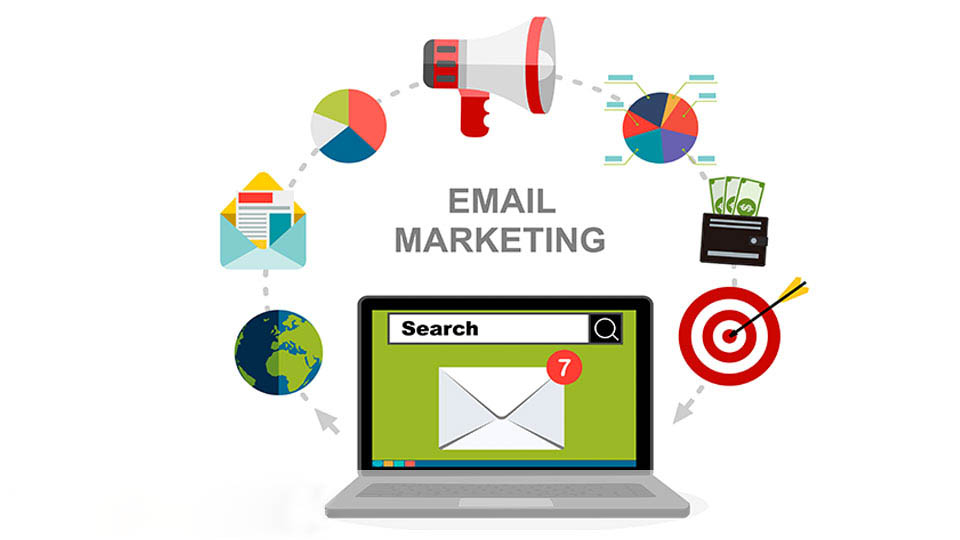Email marketing is a powerful tool for bloggers looking to build a loyal audience and drive engagement. By creating an effective email list and crafting compelling campaigns, bloggers can nurture relationships with their readers and boost their online presence. In this blog, we’ll explore the key steps to building an email list and creating effective email campaigns, ensuring your efforts lead to significant results.
1. Understanding the Importance of Email Marketing

Why Email Marketing Matters for Bloggers:
Email marketing is a direct line of communication with your audience, allowing you to deliver personalized content straight to their inboxes. Unlike social media, where algorithms control visibility, email marketing ensures that your message reaches your subscribers. This control over your audience engagement is crucial for maintaining a strong connection with your readers.
Benefits of Building an Email List:
An email list is an asset that offers several benefits, including:
Direct Communication: Reach your audience without intermediaries.
Personalization: Tailor your messages to individual preferences.
Increased Engagement: Higher open and click-through rates compared to social media.
Monetization Opportunities: Promote products or services directly to your audience.
2. Building Your Email List

Creating Compelling Lead Magnets:
A lead magnet is an incentive offered to potential subscribers in exchange for their email address. Effective lead magnets include:
E-books and Guides: Provide valuable information or solutions to common problems.
Checklists and Templates: Offer practical tools that your audience can use immediately.
Exclusive Content: Access to premium blog posts, videos, or courses.
Optimizing Sign-Up Forms:
Your sign-up forms should be strategically placed on your blog to maximize visibility and conversion rates. Consider the following placements:
Pop-ups: Capture attention without being intrusive.
Sidebar Widgets: Keep the form visible as readers navigate your site.
Inline Forms: Embed forms within your blog posts.
Crafting a Compelling Call-to-Action (CTA):
Your CTA should clearly communicate the value of subscribing. Use persuasive language and highlight the benefits. Examples include:
Join our community for exclusive tips and tricks!
Get your free e-book and stay updated with our latest content!
3. Creating Effective Email Campaigns

Understanding Your Audience:
To create effective email campaigns, you need to understand your audience’s preferences and behaviors. Segment your email list based on criteria such as:
Interests: Tailor content to specific topics your readers care about.
Engagement Levels: Send different messages to highly engaged subscribers versus inactive ones.
Crafting Engaging Content:
Your email content should be valuable, relevant, and engaging. Key elements include:
Personalization: Use the subscriber’s name and tailor content to their interests.
Compelling Subject Lines: Capture attention with intriguing and concise subject lines.
High-Quality Content: Provide useful information, tips, or stories that resonate with your audience.
Designing Visually Appealing Emails:
A well-designed email enhances the reader’s experience and encourages engagement. Consider the following design tips:
Responsive Design: Ensure your emails look good on all devices.
Visual Elements: Use images, videos, and infographics to break up text and add visual appeal.
Clear Layout: Use headings, subheadings, and bullet points to make your content easy to scan.
4. Analyzing and Optimizing Your Campaigns
Tracking Key Metrics:
Monitor the performance of your email campaigns by tracking key metrics such as:
Open Rates: Percentage of subscribers who open your emails.
Click-Through Rates (CTR): Percentage of subscribers who click on links within your emails.
Conversion Rates: Percentage of subscribers who take a desired action, such as making a purchase.
A/B Testing:
Conduct A/B tests to determine what works best for your audience. Test different elements such as:
Subject Lines: Experiment with various lengths, tones, and styles.
Email Content: Compare different formats, lengths, and types of content.
CTAs: Test different wording, colors, and placements.
Making Data-Driven Decisions:
Use the insights gained from tracking and testing to make informed decisions. Continuously optimize your email campaigns based on what resonates best with your audience.
5. Best Practices for Email Marketing

Consistency and Frequency:
Maintain a consistent email schedule to keep your audience engaged. Determine the optimal frequency for sending emails based on your audience’s preferences and the type of content you provide.
Compliance with Email Marketing Laws:
Ensure your email marketing practices comply with regulations such as the General Data Protection Regulation (GDPR) and the CAN-SPAM Act. Key compliance measures include:
Obtaining Consent: Ensure subscribers opt-in to receive your emails.
Providing Unsubscribe Options: Include an easy way for subscribers to opt out.
Building Trust with Your Audience:
Foster trust by delivering on your promises and providing value with every email. Avoid spammy practices and respect your subscribers’ privacy.
6. Case Studies: Successful Email Marketing Campaigns
Case Study 1: The Power of Personalization:
A travel blogger increased their open rates by 40% by personalizing subject lines and content based on subscribers’ travel preferences.
Case Study 2: Engaging Visual Content:
A food blogger saw a 50% boost in engagement by incorporating high-quality images and recipe videos in their emails.
7. Tools and Resources for Effective Email Marketing
Email Marketing Platforms:
Choose a reliable email marketing platform that offers features such as:
Automation: Set up automated email sequences.
Segmentation: Easily segment your email list.
Analytics: Track and analyze campaign performance.
Content Creation Tools:
Utilize tools for creating compelling email content, such as:
Canva: Design visually appealing graphics.
Grammarly: Ensure your emails are grammatically correct and well-written.
Analytics Tools:
Leverage analytics tools to gain deeper insights into your email marketing performance. Tools like Google Analytics can help you track conversions and understand user behavior.
Conclusion:
Email marketing is an invaluable strategy for bloggers looking to build a loyal audience and drive engagement. By focusing on building a quality email list and creating effective campaigns, you can connect with your readers on a deeper level and achieve your blogging goals. Implement the strategies and best practices outlined in this guide to elevate your email marketing efforts and watch your blog thrive.


